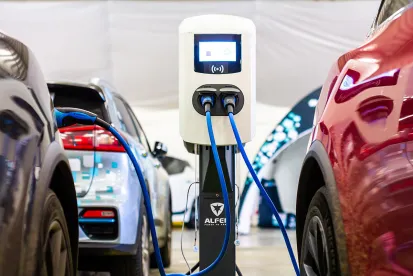The State of Wisconsin adopted a suite of amendments to its PACE statute (Wis. Stat. § 66.0627(8)) on March 14, 2022 through 2021 Wisconsin Act 175 (the “Act”).1 The Act was the only major clean energy bill that passed during the 2021-2022 legislative session in Wisconsin, and it made some key modernizations to the Wisconsin PACE statute summarized as follows:
-
Eligible Measures: The Act expanded the suite of improvements to real property that are eligible for PACE financing. These expansions include the following:
-
Reliability improvements such as energy storage, backup power generation or microgrid improvements;
-
EV infrastructure improvements;
-
Resiliency Improvements that increase resilience or improve the durability of infrastructure, including storm, wind fire and flooding resiliency measures (provided if a floodplain zoning ordinance applies to the subject property, and the building is nonconforming, the improvements must bring the property into conformance, and if the local municipality participates in the National Flood Insurance Program, the property owner obtains required flood insurance); and
-
Storm water control measures, which include structural or nonstructural measures designed to mitigate storm water runoff (such as green roofs, infiltration systems, constructed wetlands and swales—but not including rain barrels).
-
-
Lien: The amendments clarified that the PACE special charge runs with the land (and still has the same priority as a special assessment lien in Wisconsin).The PACE special charge lien remains a springing lien, however, triggered on delinquency.
-
Term: PACE financings may now not exceed a 30-year term.
-
Expansion of Private Enforcement Rights: The Act now specify that the foreclosure of a PACE special charge must occur through the in rem procedures set forth in Wis. Stat. § 75.521 (which the vast majority of Wisconsin PACE financing agreements and/or ordinances already specify).(This in rem procedure was previously in alternative to the tax deed and certificate sale procedure that is now otherwise available only to non-PACE special charge delinquencies.)Additionally, the Act clarified that a county may delegate to a private third party the “right to take judgement” to a parcel subject to an in rem foreclosure process using the pre-existing assignment procedures set forth in Wis. Stat. § 75.106 (subject to certain exceptions to make the assignment more streamlined and ignore certain procedures relevant only to environmentally contaminated properties).This change should bring greater certainty to PACE capital providers with respect to the voracity of their security from the PACE special charge.
-
Energy Assessment in Place of Savings Guarantee: The Act eliminated the prior requirement that PACE financings over $250,000 require the borrower to obtain an energy savings guarantee from a contractor or engineer for a savings-to-investment ratio of greater than 1.0.In its place, the Act now require that for energy efficiency, reliability or water efficiency improvements, the borrower obtain an assessment of the expected monetary savings—or in the case of a renewable energy project, the expected monetary benefit from energy generation. This requirement does not apply to an EV charger, resiliency, customer-side water service line replacement (which the statute also allows to be financed through PACE) or storm water control measures.
-
Consent of Mortgage Holder: The Act now makes explicit the requirement that the consent of all holders of a mortgage on the premises consent to the PACE financing as a condition to entering into the PACE loan agreement. Lender consent has been a de facto requirement for PACE financings in Wisconsin in light of pre-existing program requirements. This statutory change simply makes this a legal requirement.
With a record-setting 2021 for PACE in Wisconsin, resulting in over 21 C-PACE transactions representing $53,212,264 in direct clean energy and energy efficiency financing in Wisconsin, the changes to the Wisconsin PACE statute represented by the Act should act as a further catalyst for the growth of clean energy financing in the state.
ENDNOTES
1 For background on PACE and the suite of applications for PACE financings, refer to Foley’s article on the same available here.




 />i
/>i

